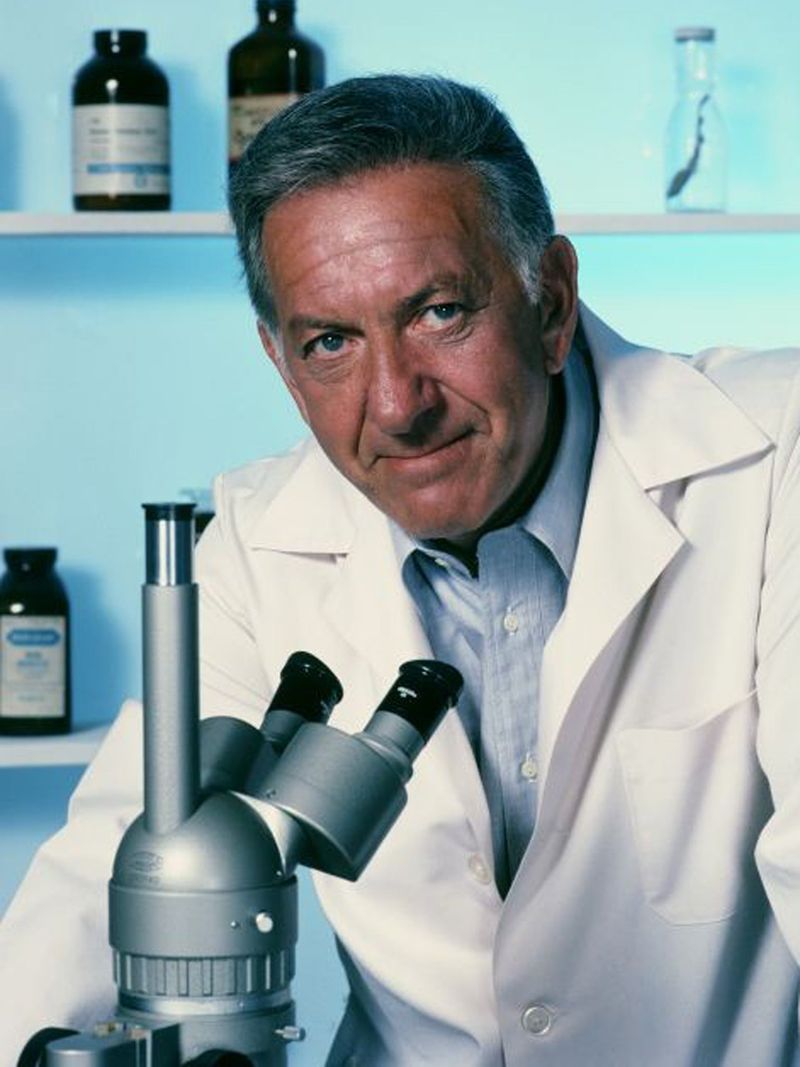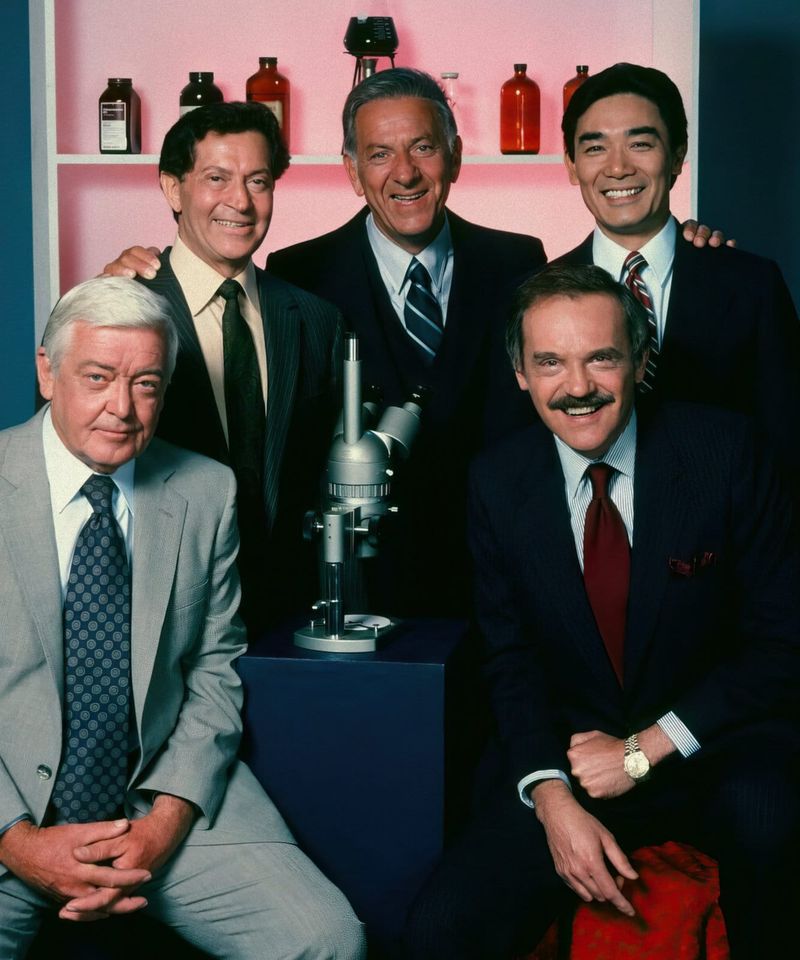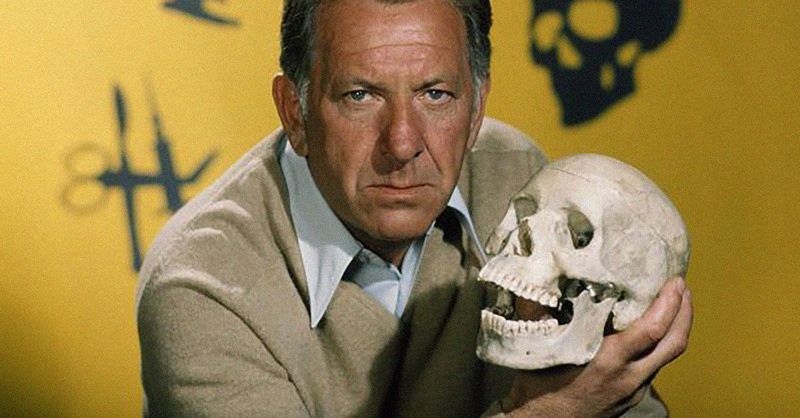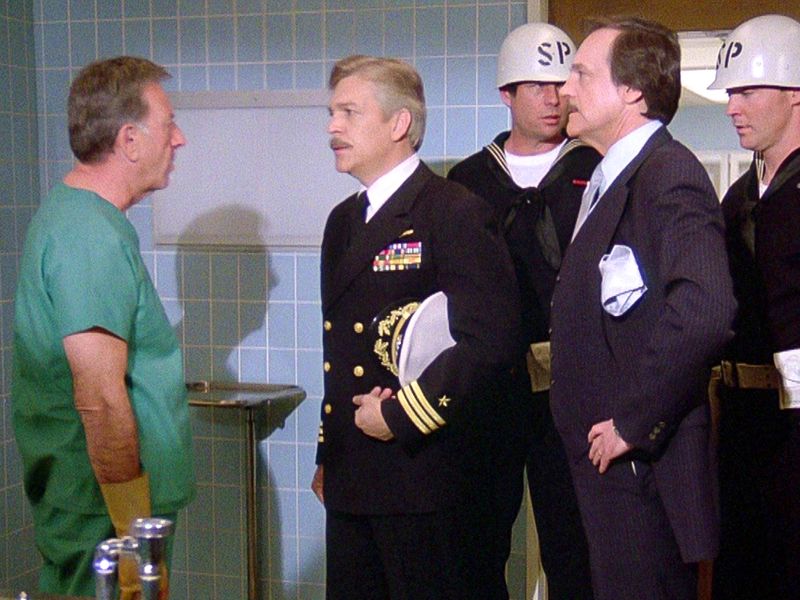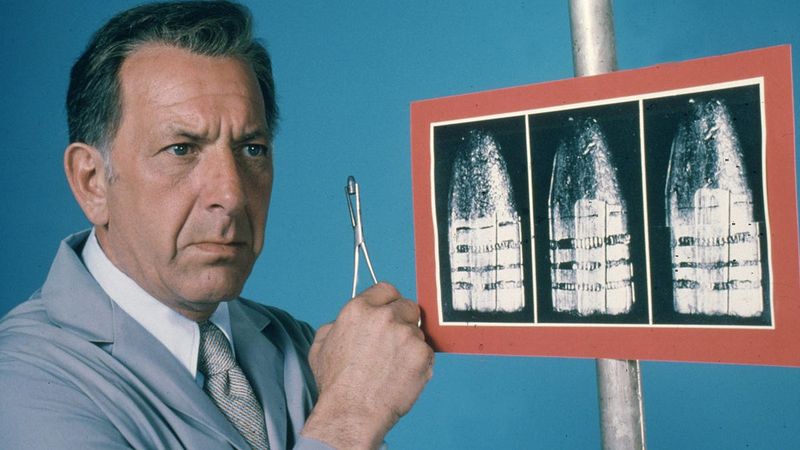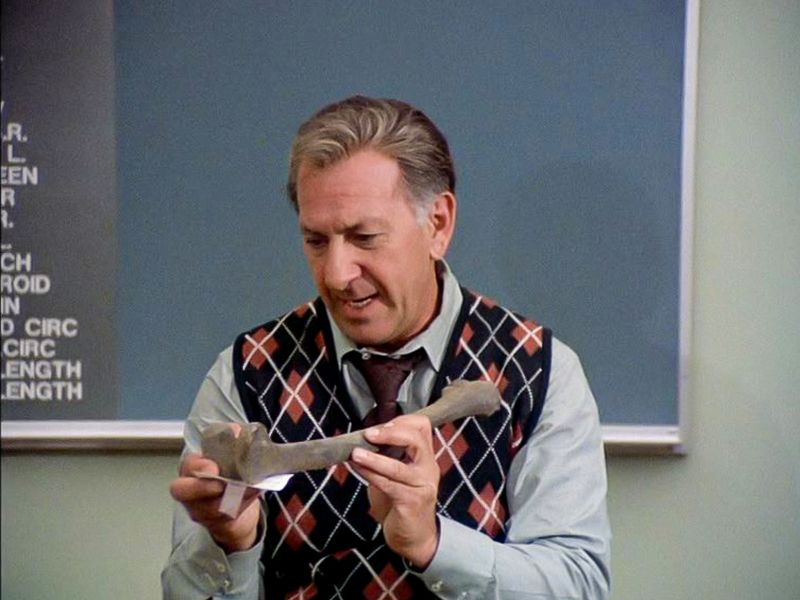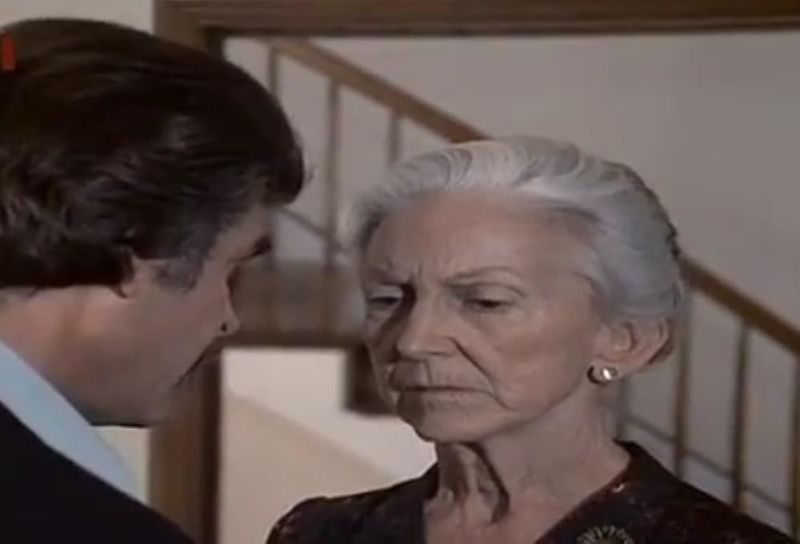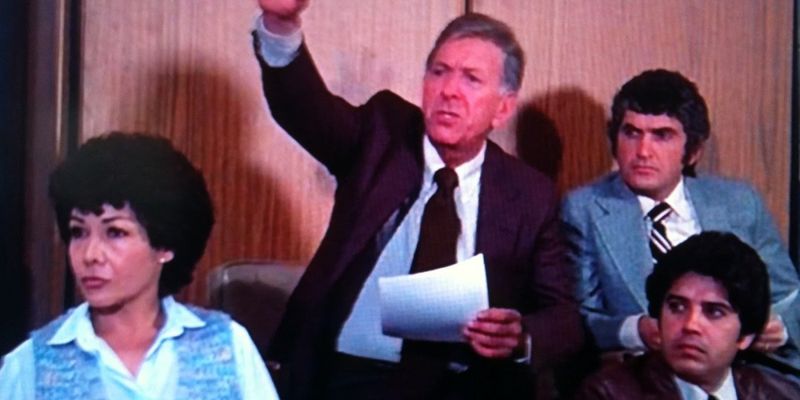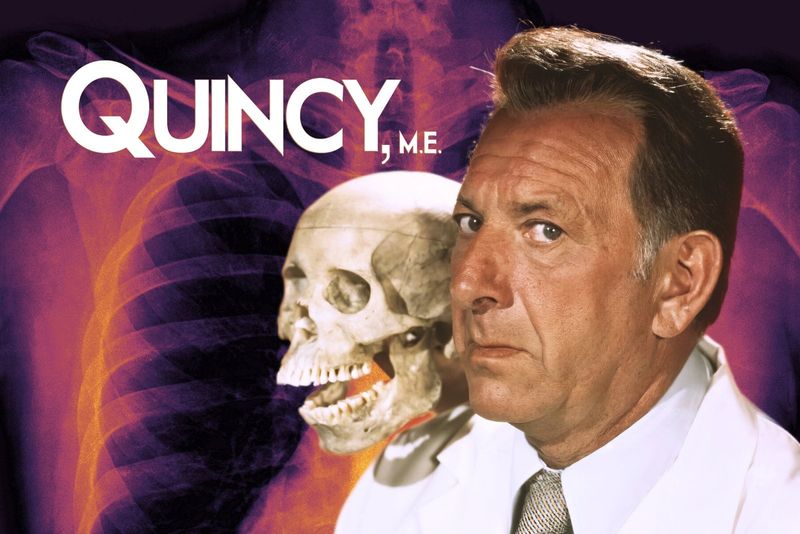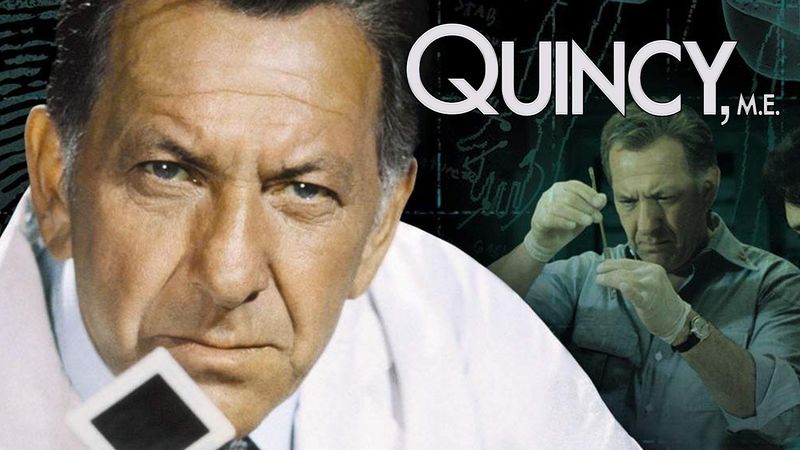Quincy, M.E., with Jack Klugman, was a pioneering series that opened the doors to today’s forensic crime shows. Its unique approach to storytelling through the lens of a medical examiner brought science and crime-solving into the living rooms of audiences worldwide. The show was not only entertaining but also educational, addressing real-world issues and showcasing the importance of forensic science. As a trailblazer in the genre, Quincy, M.E. influenced the development of countless forensic dramas that followed, setting the stage for modern shows that combine mystery, science, and drama.
1. Spotlighted the Role of the Medical Examiner
In a time when few understood the role of a forensic pathologist, Quincy, M.E. brought medical examiners to the forefront. Before the show, the idea of a doctor solving crimes was virtually unheard of. The series depicted Quincy’s job with detail and intrigue, making the role of a medical examiner both understandable and exciting. Each episode highlighted the critical contributions of forensic pathology in solving complex cases, paving the way for future shows to explore similar themes. The medical examiner was no longer just a background figure but a central character with a pivotal role in storytelling.
2. Made Science Cool on TV
Turning lab work into captivating TV was a challenge Quincy, M.E. tackled with flair. The show made science cool long before flashy graphics and technology-enhanced visuals became standard. Viewers were enthralled by Quincy’s meticulous approach to uncovering hidden truths through scientific analysis. By making complex procedures accessible, the series invited audiences to appreciate the art of forensic science. It laid the foundation for future shows where science wasn’t just a tool but a star, influencing how forensic science is perceived today. The lab became a stage for drama, intellect, and revelation.
3. Showed Crime-Solving Beyond the Police
Quincy, M.E. demonstrated that crime-solving wasn’t solely the domain of detectives with badges. The series expanded the narrative, showing how different professions contribute to justice. By highlighting the medical examiner’s perspective, it showcased a multidisciplinary approach to solving crimes. Quincy’s interactions with law enforcement underscored the importance of collaboration and the varied expertise necessary to uncover the truth. This broader view of crime-solving opened doors for modern shows that embrace diverse roles and perspectives in the pursuit of justice, thus enriching the storytelling landscape.
4. Focused on Autopsies as Key Evidence
The art of autopsy took center stage in Quincy, M.E., where dissections revealed truths others often overlooked. By focusing on autopsies as critical evidence, the show emphasized the value of detailed medical examination in uncovering the cause of death. Quincy’s unique approach to dissecting cases provided audiences with a deeper understanding of the investigative process. This focus on autopsies set a precedent, encouraging future forensic dramas to delve into the meticulous details of medical examinations. The show elevated the autopsy from a mere procedure to a vital storytelling element, rich with potential for discovery.
5. Tackled Real Social Issues
Quincy, M.E. wasn’t afraid to tackle tough social issues, addressing matters like public health, racism, and elder abuse. Through gripping narratives, the series highlighted these themes, provoking thought and encouraging dialogue among viewers. By intertwining social advocacy with crime-solving, Quincy became more than just entertainment. It was a platform for discussion, challenging societal norms and encouraging change. This bold storytelling approach influenced how modern forensic shows address complex, real-world issues, reflecting society’s challenges and prompting audiences to think critically about the world around them.
6. Portrayed the Expert as the Hero
Quincy, M.E. positioned its titular character not just as a helper but as the hero of his stories. Unlike other shows where experts played secondary roles, Quincy was front and center, leading investigations and solving cases. His expertise was crucial, and his determination often made him the key to unraveling mysteries. By portraying the expert as the hero, the series set a trend for future forensic shows where specialists are central figures, celebrated for their knowledge and instincts. This shift in focus changed audience perceptions, valuing expertise and intellect as heroic traits.
7. Used Medical Jargon in Everyday Language
Quincy, M.E. was adept at translating complex medical jargon into language that viewers could understand. The show’s ability to make intricate scientific concepts accessible and engaging was a key part of its success. Quincy’s explanations were clear and insightful, enabling audiences to grasp the nuances of forensic science without feeling overwhelmed. This approach not only educated viewers but also made science intriguing and approachable. Future forensic dramas adopted this technique, ensuring that even the most complicated procedures were presented in a way that was both informative and captivating.
8. Highlighted the Importance of Scientific Accuracy
Scientific accuracy was a hallmark of Quincy, M.E. The writers went to great lengths to ensure that the forensic science portrayed in the series was realistic, consulting with real-life medical examiners to maintain authenticity. This commitment to accuracy set a standard for future shows, emphasizing the importance of getting the science right. By presenting credible scientific processes, Quincy educated its audience and set expectations for forensic dramas to follow. This dedication to authenticity helped build trust with viewers, demonstrating that entertainment could also be informative and truthful.
9. Combined Mystery with Advocacy
In Quincy, M.E., each episode was more than just a mystery; it often ended with Quincy advocating for legal and societal changes. This blend of mystery and advocacy enriched the storytelling, providing depth beyond the typical whodunit format. Quincy’s passion for justice and reform resonated with viewers, inspiring conversations about issues addressed in the show. By integrating advocacy into its narrative, Quincy set a precedent for future forensic shows to combine entertainment with meaningful messages. This unique storytelling approach left a lasting impact, encouraging audiences to think beyond the crime itself.
10. Created a One-Man Crusader Archetype
Quincy, M.E. introduced audiences to the one-man crusader archetype, with its lead character often standing alone against bureaucracy and resistance. Quincy’s determination to uncover the truth and fight for justice made him a compelling and relatable hero. This archetype has been echoed in many forensic shows, where the protagonist faces challenges head-on, often against the odds. By embodying this lone crusader spirit, Quincy paved the way for characters who are willing to battle institutions for the greater good. His tireless pursuit of justice inspired viewers and set a standard for heroism in forensic dramas.
11. Introduced Forensics as a Key Story Driver
Forensics wasn’t a mere detail in Quincy, M.E.; it was the primary vehicle for storytelling. Each episode’s mystery was deeply intertwined with forensic science, showcasing its critical role in solving crimes. By placing forensics at the heart of the narrative, the show emphasized the power of scientific investigation. This approach inspired future forensic dramas to place similar importance on scientific methods, making them central to the plot. Quincy’s innovative storytelling demonstrated that forensics could drive compelling narratives, capturing audience interest and setting a precedent for the genre.
12. Blended Personal Drama with Professional Duty
Quincy, M.E. skillfully blended personal drama with professional duty, portraying its lead character as a fully developed individual. Quincy’s personal struggles and relationships added depth to his character, making him relatable and engaging. This balance between personal and professional life created a compelling narrative, allowing viewers to connect with Quincy on multiple levels. Future forensic shows followed suit, understanding that character development was as crucial as plot. By weaving personal stories into the fabric of the professional narrative, Quincy enriched its storytelling, offering audiences a well-rounded viewing experience.
13. Inspired a Generation of Medical Professionals
Quincy, M.E. served as an inspiration for many aspiring medical professionals and forensic scientists. The show’s portrayal of the medical examiner’s critical role in solving crimes sparked interest and curiosity among viewers. Many professionals in the field credit Quincy with igniting their passion for forensic science. The series showcased the significance of their work, encouraging a new generation to pursue careers in medicine and criminalistics. By highlighting the impact of dedicated professionals, Quincy left a lasting legacy, inspiring countless individuals to follow in its footsteps and contribute to the field of forensic science.
14. Pushed TV Boundaries on Graphic Content
For its time, Quincy, M.E. was groundbreaking in its portrayal of graphic content, boldly displaying autopsy procedures and dead bodies. This was a significant departure from the norm, pushing television boundaries and challenging viewers’ perceptions. The show’s willingness to depict such content laid the groundwork for future forensic dramas, which embraced even more explicit portrayals of crime scenes and investigations. By normalizing the depiction of graphic content, Quincy allowed audiences to appreciate the realities of forensic work, paving the way for the unflinching depictions seen in today’s crime shows.
15. Set the Stage for the Procedural Formula
With its “case of the week” structure, Quincy, M.E. set the stage for the procedural formula that dominates modern forensic dramas. Each episode presented a new mystery, engaging viewers with fresh stories while maintaining a consistent framework. This format allowed for a diverse exploration of themes and topics, keeping the series dynamic and compelling. Many contemporary crime shows have adopted this approach, crafting episodic narratives that combine novelty with familiarity. Quincy’s procedural format proved highly effective, demonstrating that a structured, yet flexible storytelling method could captivate audiences and sustain long-running series.

